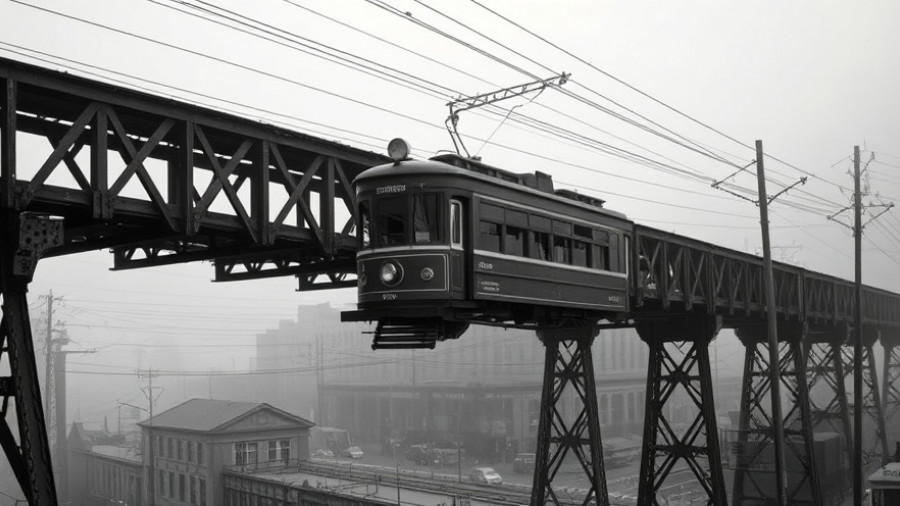
The Revival of the Kansas City Streetcar
The Kansas City streetcar system holds a special place in the city’s history, evolving from a prominent transportation mode to a modern revival that connects neighborhoods and fosters local development. With the recent expansion reaching the University of Missouri-Kansas City (UMKC), the streetcar showcases Kansas City’s commitment to enhancing urban life and increasing accessibility for its residents.
In 'KC Streetcar expansion paving new trail in long history', the historical significance of Kansas City's streetcars is explored, prompting us to analyze its impact on modern neighborhoods and local businesses.
A Glimpse into the Past: The Historical Significance of Streetcars
Kansas City’s streetcar history traces back to the late 1800s when horse-drawn buggies, affectionately termed “hay burners,” ruled the roads. The quest for a more efficient system was spearheaded by engineer Robert Gillam, who introduced cable cars to the city in 1878. This innovation not only slashed travel times but also sparked significant urban development. Maps from the early 1900s reveal how neighborhoods blossomed along streetcar lines, creating vibrant communities known as streetcar suburbs.
Transitioning into the Mid-20th Century: A Shift in Transportation
The booming ridership of the 1920s and 1940s indicated the streetcar's success in Kansas City. However, the 1950s ushered a wave of automobiles, leading to the gradual dismantling of the streetcar system. Between increased car ownership and urban sprawl, the functionality and popularity of streetcars dwindled, leaving Kansas City with a fragmented public transport system for decades.
The Modern Streetcar: A New Era Begins
Fast forward to 2016, Kansas City reignited its streetcar tradition, much to the delight of local residents and businesses. The recent extension to UMKC is not just a logistical development; it's a testament to Kansas City’s commitment to creating accessible transport that benefits all citizens. This expansion reaffirms the city’s dedication to sustainable urban mobility and encourages local economic growth. Riders can enjoy free transit, promoting frequent use and further embedding the streetcar into the community’s fabric.
Impact on Local Neighborhoods: Boosting Community and Business
As the streetcar lines extend from Union Station to UMKC, local businesses and communities are poised to thrive. The accessibility brought by the streetcar aligns perfectly with urban redevelopment trends, drawing visitors and potential customers into the area. Our local residents can expect to see an increase in foot traffic, boosting neighborhood events and cultural activities, along with opportunities to market unique local offerings.
Future Predictions: What Lies Ahead for Kansas City’s Streetcar?
Looking ahead, experts anticipate that the streetcar expansion will continue to reshape Kansas City’s urban landscape. As neighborhoods embrace this modern transport option, we can expect further enhancements in local living standards, promoting connectivity and fostering community ties. Ultimately, the revitalization of the streetcar signifies a step toward better urban planning and a greener future.
Conclusion: Join the Conversation!
The opening of the streetcar extension is not just a story about transportation; it’s interwoven with the identity of Kansas City itself. As we embrace this modern transit method, we're also committing to nurturing our neighborhoods and uplifting local businesses.
Have a story to share or want to contact us for more details? Drop us an email at team@kansascitythrive.com.
 Add Row
Add Row  Add
Add 





Write A Comment